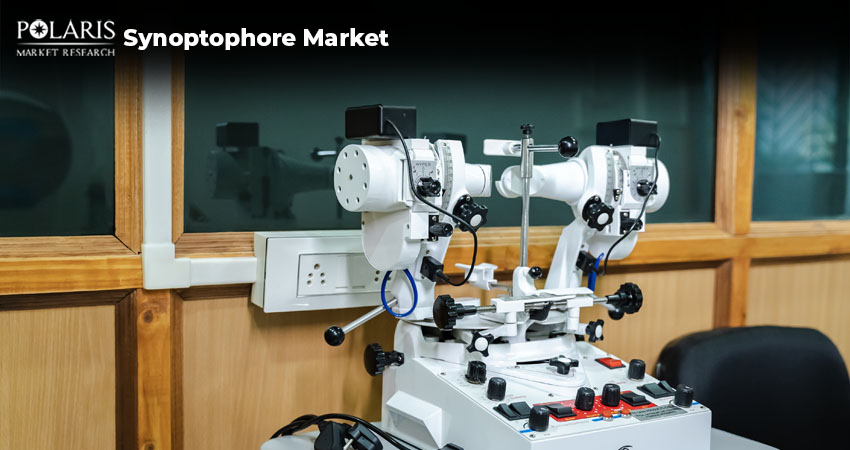Exploring Crucial Role of Synoptophore in Orthoptics and Ophthalmology

Healthcare is one of the few sectors that has always been at the forefront of adopting new tools and technologies. While modern healthcare is driven by digital diagnostics and artificial intelligence-powered medical tools, there are still some instruments that continue to hold ground for their versatility, accuracy, and clinical value. One such device is the synoptophore, a classic instrument widely used in eye care.
Even though the design of the synoptophore dates back decades, it continues to play a key role in diagnosing and treating issues related to the working of both eyes. This blog post explores the basics, working mechanism, and key applications of synoptophores. It also sheds light on the emerging trends and clinical benefits of this fundamental eye care tool.
What Is A Synoptophore?
A synoptophore is a specialized medical device used in ophthalmology to measure, diagnose, and manage ocular misalignments and fusion defects. The device comes with two tubes mounted on a central frame. Each of these tubes, which contain slides displaying complementary images, is aimed at one of the patient’s eyes.
Clinicians use a synoptophore to present separate images to each eye. The brain of the individual to whom the images are shown then attempts to merge them into a single perception. By manipulating the angles, clinicians can assess several binocular functions, including the degree of deviation (strabismus), fusion ranges, and suppression tendencies. Synoptophore is also used therapeutically to train or retrain binocular coordination and fusion ability.
How Does the Synoptophore Work?
As an orthoptic instrument, the synoptophore works on the haploscopic principle. The haploscopic principle refers to the separation of visual space into two distinct areas, each visible only to one eye. In essence, it isolates the function of each eye while allowing for binocular assessment.
Key Mechanisms of Synoptophore
-
Angular Adjustment: The synoptophore can be independently angled. This allows clinicals to measure deviation, simulate different gaze positions, and calculate heterophoria or strabismus.
-
Slide Projection: The synoptophore uses interchangeable slides to display first-degree (simultaneous perception), second-degree (fusion), and third-degree (stereopsis) images.
-
Convergence and Divergence Testing: The device evaluates the ability of a patient to maintain single vision as the eyes move inward (converge) or move outward (diverge).
-
Suppression Detection: If an eye ignores the image, it can be an indication of suppression. Suppression is a key symptom in amblyopia or strabismus.
Applications of Synoptophore in Clinical Practice
While modern vision testing tools typically leverage automation, the synoptophore’s ability to combine diagnostic precision with therapeutic function makes it unique. It is primarily used in orthoptic clinics, ophthalmology departments, and pediatric vision centers.
Here’s a look at some common applications of synoptophores:
Strabismus Assessment: The use of the synoptophore helps determine the angle and type of misalignment, both at distance and near.
Amblyopia Therapy: Synoptophore finds uses in vision therapy exercises to stimulate the weaker eye and promote binocular coordination.
Post-Surgical Follow-Up: Synoptophore is used in post-surgical follow-up to evaluate the effectiveness of corrective strabismus surgeries. It also helps guide further treatment.
Abnormal Retinal Correspondence (ARC): Assesses whether the brain adapts to eye misalignment (strabismus) by linking non-corresponding points on the retinas.
Diplopia (Double Vision) Analysis: Identifies the type (monocular or binocular), direction (horizontal, vertical, or diagonal), and underlying cause.
Benefits of Synoptophore
Although the synoptophore is a non-digital device, it offers several advantages that reinforce its continued use in eye care. These include:
High Customizability: Synoptophore enables high customization by allowing clinicians to change image slides, alter tube angles, and adjust illumination. That way, they can make personalized assessments based on the patient’s age, condition, and severity of symptoms.
Real-Time Observations: Unlike digital systems that analyze results post-hoc, the synoptophore allows clinicians to observe responses in real time. This allows for immediate adjustments or decisions about the treatment path.
Therapeutic Utility: Synoptophore also offers orthoptic exercises, fusion training, and suppression therapy. All of these are important for improving binocular function, especially in children.
Non-Invasive and Safe: Synoptophore is completely non-invasive and free from radiation or complex procedures. This makes it ideal for repeated use, even in young or sensitive patients.
Cost-Effective: Compared to digital radiography and other high-end digital imaging tools, the synoptophore is relatively affordable and requires minimal maintenance. This makes it a valuable asset for clinics with limited resources.
Trends Transforming the Synoptophore Landscape
Here’s a look at some of the key trends shaping the synoptophore landscape:
Digital Synoptophores
Medical device manufacturers now offer digital synoptophores that come equipped with digital displays, computerized angle calibration. Also, they enable connectivity to electronic health record (EHR) systems. These features improve data accuracy and simplify documentation.
Virtual Reality (VR) Integration
Emerging software mimics synoptophore testing and therapy in VR environments. While not yet a complete replacement, it is useful in pediatric cases or remote consultations.
Compact and Portable Models
Innovations in design have led to the development of more ergonomic and lightweight synoptophores. These synoptophores are suitable for mobile eye clinics, telehealth settings, and home-based orthoptic therapy.
Enhanced Training Resources
The availability of interactive tutorials and simulation software has enhanced the learning curve for practitioners. This is vital in developing regions where orthoptic training may be limited.
Who Uses Synoptophores?
Synoptophores are primarily used by orthoptists, but they can also be utilized by:
- Pediatric ophthalmologists
- Optometrists specializing in binocular vision
- Neuro-ophthalmologists (for diplopia management)
- Rehabilitation professionals working with patients post-neurological events
Final Thoughts
To conclude, the synoptophore is a versatile and efficient instrument that allows clinicians to evaluate and treat vision issues effectively. Whether used in a high-tech clinic or a mobile unit, the relevance of synoptophore is deeply rooted in its ability to combine diagnostic rigor with therapeutic benefit.

